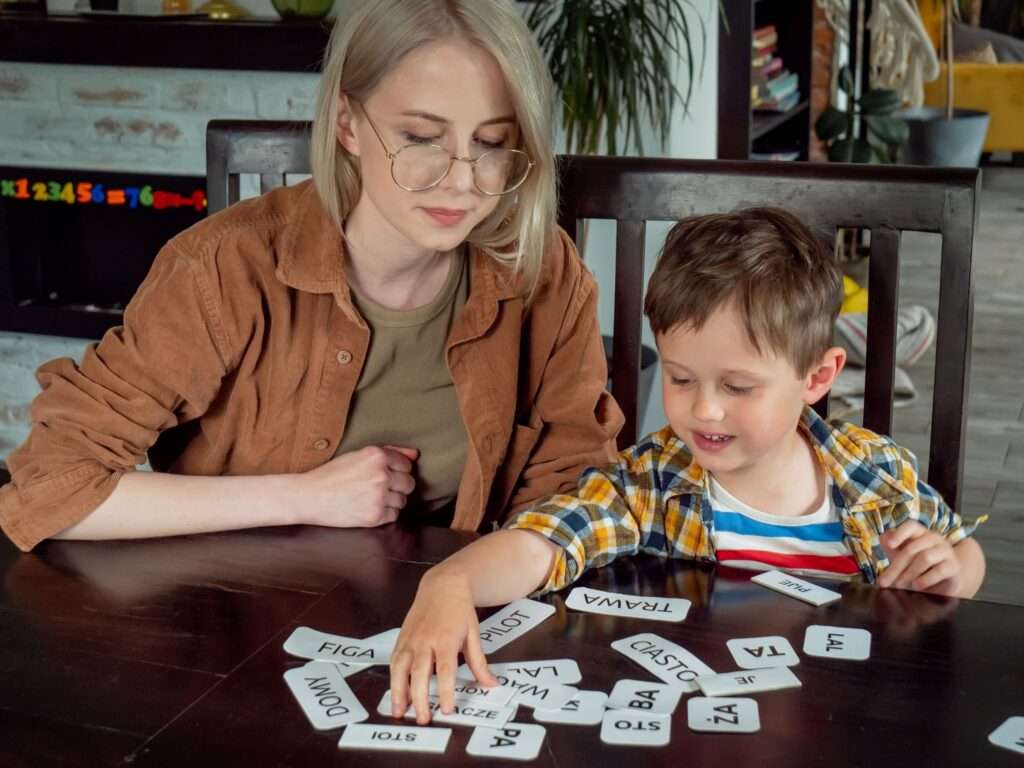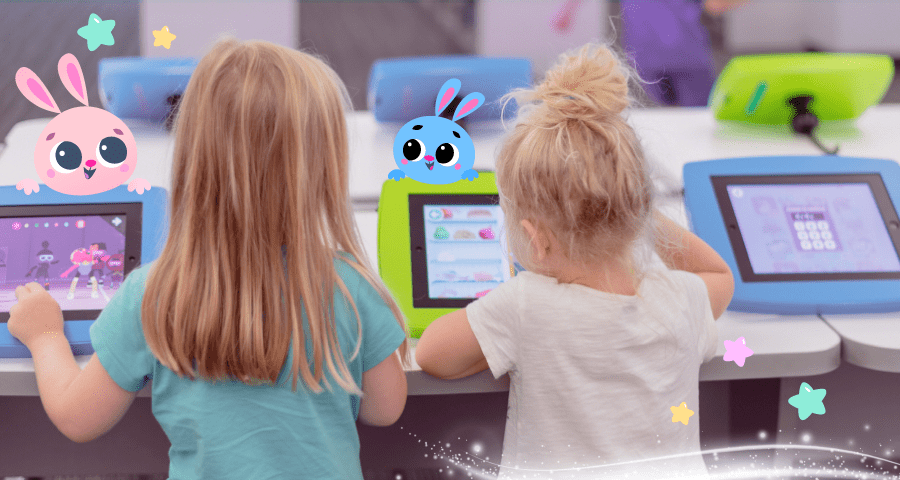As a parent, it can be hard to teach your child to write, especially if you’re not sure where to start or how to keep them interested. We get it, so we’ve made a simple, step-by-step guide to help you. Whether your child is just starting or already knows some things, you can begin right where they are and go at a pace that works for both of you. Don’t worry, we’re here to make writing fun!
Why is Children Writing Important?

Learning to write helps preschoolers share their thoughts, experiences, and ideas. It’s an important skill for school and future success. Here’s why it matters:
- Helps organize thoughts: When your child draws and labels pictures, like “Mom” under a family picture, they’re learning to share ideas clearly.
- Encourages thinking: Writing or talking about their favorite toy helps them explain what makes it special.
- Boosts imagination: Scribbling or drawing lets kids create stories and characters, like a dragon with its own adventure.
- Explores new ideas: After learning about animals, your child might write “lion” or draw their favorite animal, making learning fun.
- Builds confidence: Writing cards or helping with lists makes your child feel proud and excited to keep practicing.
- Prepares them for the future: Early writing habits help children as they grow, from writing thank-you notes to emails.
By making writing fun in everyday activities, you help your preschooler build skills that last a lifetime.
Does Your Preschooler Have Writing Problems?

Answer the following “yes” or “no” questions to see if your child might need extra support in developing writing skills:
- Can your kid copy letters, numbers, or their name?
- Does your kid have trouble using a pencil or crayon, such as difficulty gripping theirs correctly, using a fist instead of fingers, or difficulty applying consistent pressure when coloring?
- Can your little one draw simple shapes, like circles, squares, or pictures, like a sun or house?
- Does your preschooler like to scribble or try writing, even if it doesn’t look like real letters?
- Can your little one say or recognize the ABCs?
- Does your child try to “write” stories, even if it’s just scribbles or shapes?
- Does your kid like looking at books or listening to stories?
- Does your child get upset when asked to write or draw?
Results:
- Mostly Yes: Your child is on a good path, and you can continue encouraging their writing skills with drawing, tracing, and simple writing games.
- Mostly No: Your kid may need some extra support to develop their writing skills. Activities like practicing letter recognition, holding a pencil, and making simple marks on paper can help build confidence. If you’re concerned, consider talking to your pediatrician or a developmental expert.
Why Teaching Kids to Write Must Be Step by Step?
Writing is a complex skill that involves many components: spelling, grammar, vocabulary, structure, and creativity. Writing improves with practice, but this practice must be guided and structured. A step-by-step approach ensures that kids understand and master the basic elements before moving on to more advanced concepts. It helps build a strong foundation that will support their writing development as they progress.
How to Improve Kids Writing: Guide for Parents
To help you get started with your child today, we have created a step-by-step tutorial for teaching writing. You can progress gradually or begin at the level your kid is already at.
Step-by-Step Writing Tips for Kids
1: Start with Simple Activities
Begin by introducing basic writing activities. Encourage your child to draw pictures and write short descriptions or labels. Gradually move on to simple sentences about daily activities, such as “I went to the park” or “I ate an apple.”
Notice: Be patient if your child struggles at first; building confidence takes time.
Challenge: Some kids may resist writing initially. Use their interests, such as favorite characters or hobbies, to inspire topics.
2: Reading Regularly
The more kids read, the more they encounter new words, sentence structures, and ideas. Set aside time each day for reading stories, and make sure to maintain communication to help kids understand different writing styles and formats.
Notice: Choose books that match your kid’s reading level and interests to keep them engaged.
Challenge: Finding optimal books can be difficult. Visit the library together for a broader selection.
3: Create a Comfortable Environment
Designate a quiet and comfortable setting for your child to write. Ensure it is well-lit and free from distractions. Provide fun and creative writing tools (colorful pens, stickers, and notebooks), to make the process enjoyable.
Notice: Keep the space tidy to help your child focus more effectively.
Challenge: Maintaining a distraction-free environment can be tough. Limit screen time or noise during writing sessions.
4: How to Writing for Kids: Prompts
Writing prompts can ignite a child’s imagination and encourage creativity. Offer prompts like “Describe your favorite superhero” or “What would you do if you had a pet dinosaur?” Prompts help kids generate ideas and guide their writing.
Notice: Adjust prompts based on your child’s age and skill level.
Challenge: Some kids may struggle to start. Offer multiple prompts or examples to spark their imagination.
5: Focus on Grammar and Punctuation
While creativity is important, teaching children basic grammar and punctuation is essential. Start with simple rules like sentence structure, capitalization, and periods. Gradually introduce more advanced concepts such as commas, quotation marks, and question marks.
Notice: Use examples from your child’s writing to make lessons more relatable.
Challenge: Explaining grammar rules without overwhelming your kid can be tricky. Break lessons into small, digestible parts.
6: Practice Daily
Encourage your child to write daily. It doesn’t have to be a long essay—short writing exercises like writing a diary entry, making a list, or writing a letter to a friend will build their skills over time.
Notice: Set a time each day for writing to establish a routine.
Challenge: Keeping writing sessions consistent can be hard amidst busy schedules. Integrate writing into daily activities, like creating shopping lists.
7: Use Technology
Various apps and websites that can make writing more fun. Tools with interactive writing games help improve writing skills in an engaging way.
Notice: Monitor your kid’s use of technology to ensure it remains productive.
Challenge: Balancing screen time with traditional writing methods is important. Set limits to encourage a mix of both.
8: Writing Help for Kids: Feedback
Positive reinforcement is key to building a child’s confidence. Praise their effort, creativity, and improvements. Provide constructive feedback by focusing on what they did well and offering gentle suggestions for growth.
Notice: Highlight specific improvements to show their progress clearly.
Challenge: Delivering constructive feedback without discouraging your kid can be delicate. Focus on positive reinforcement first.
9: Social Activity
Sharing their writing with others can be motivating for children. Organize writing sessions with friends or family members where children can read their stories aloud or exchange written work. This can also be done through online writing communities or in writing clubs.
Notice: Encourage children to listen and give feedback to others during these sessions.
Challenge: Some kids may feel shy sharing their work. Start with trusted family members to build confidence.
10: How to Teach Children to Write: Goals
Help your kid set achievable goals, like writing a short paragraph, completing a poem, or composing a letter. Tracking these goals and celebrating achievements fosters a sense of accomplishment and encourages progress.
Notice: Break larger goals into smaller ones.
Challenge: Ensuring goals remain realistic and achievable can be challenging. Adjust goals based on your kid’s progress.
11: Be Patient and Consistent
Writing skills take time to develop, and progress may be slow at first. Be patient, and consistent. Celebrate small victories, and remind them that practice makes perfect.
Notice: Share examples of your learning experiences to inspire perseverance.
Challenge: Staying consistent in your encouragement during slow progress periods can be difficult. Keep a journal of small wins to stay motivated.
How to Help my Child Write Better: 7 Fun Games for Parents

- Story Dice: Story dice are a fun way to help kids write. Each die has pictures or words on it. When the child rolls the dice, they must use the pictures or words to make a short story. This helps kids practice writing and use their imagination.
- Word Associations: In this game, parents say a word, and the child says the first word that comes to mind. After a few rounds, the child writes a sentence using as many words as they can. This helps improve vocabulary and creativity.
- Letter Scavenger Hunt: Write letters of the alphabet on cards and hide them around the house. When the child finds a letter, they need to think of a word that starts with that letter and use it in a sentence or story. This is a great opportunity to improve vocabulary and sentence structure.
- Sentence Scramble: Write simple sentences on separate pieces of paper, then cut the sentences into individual words. Mix up the words and challenge your child to put them back into the right order. This helps with sentence structure, punctuation, and grammar.
- Prompts Jar: Put writing prompts on small pieces of paper in a jar (like “Write a letter to your future self” or “Describe a day in the life of your pet”). Each day, have your child pick a prompt and write a short story. This helps kids practice writing regularly.
- Character Creation Game: Ask your child to create a character by answering questions about them, like their name, looks, and favorite things. After, your child can write a story with that character. This game helps build creativity and cognitive storytelling skills.
- Word Relay Race: In this game, players take turns writing a sentence using a random word. For example, one player writes a sentence with the word “apple,” and the next uses the word “run.” This game helps kids think quickly and improve their writing.
How to Teach your Child to Write: Tools to Use

The right tools can help kids enjoy writing and learn better. Here are some ideas to make writing easier and more fun:
- Supplies: Provide your child with a variety of notebooks, colorful pens, and pencils to make writing fun. You can also add stickers and stamps to make the process more engaging. These tools make writing feel like a creative activity, rather than a task.
- Templates: Offer templates for different types of writing, such as letters, short stories, or poems. Templates guide children in structuring their writing and give them a starting point when they aren’t sure how to begin. This helps build confidence and encourages them to experiment with different formats.
- Reading Materials: Stock up on books, magazines, or comic books that match your child’s interests. The more they enjoy what they read, the more excited they’ll be to write about it. Whether it’s a favorite character or a topic they love, reading sparks ideas for their own stories.
- Learning Apps: Use educational apps that make writing fun and interactive. Apps with games, puzzles, or creative exercises allow kids to enhance their writing skills in an enjoyable way. These tools often turn learning into a game, making writing feel less like work and more like play.
- Interactive Tools: Add other hands-on tools, like magnetic letters or dry-erase boards, to help with letter recognition and word formation. These tools provide instant feedback, which makes learning more engaging and less frustrating.
How to Teach Kids to Write with Bini Games Apps
Learning to write becomes exciting and fun with Bini Games Apps! Our interactive games are perfect for teaching kids their ABCs and helping them write their first words in a playful way. Kids can learn by interacting with cute animated characters, solving colorful puzzles, and enjoying fun activities that boost their skills. Bini Games mixes learning and play, making it easier for children to understand writing while having fun. Try today!










